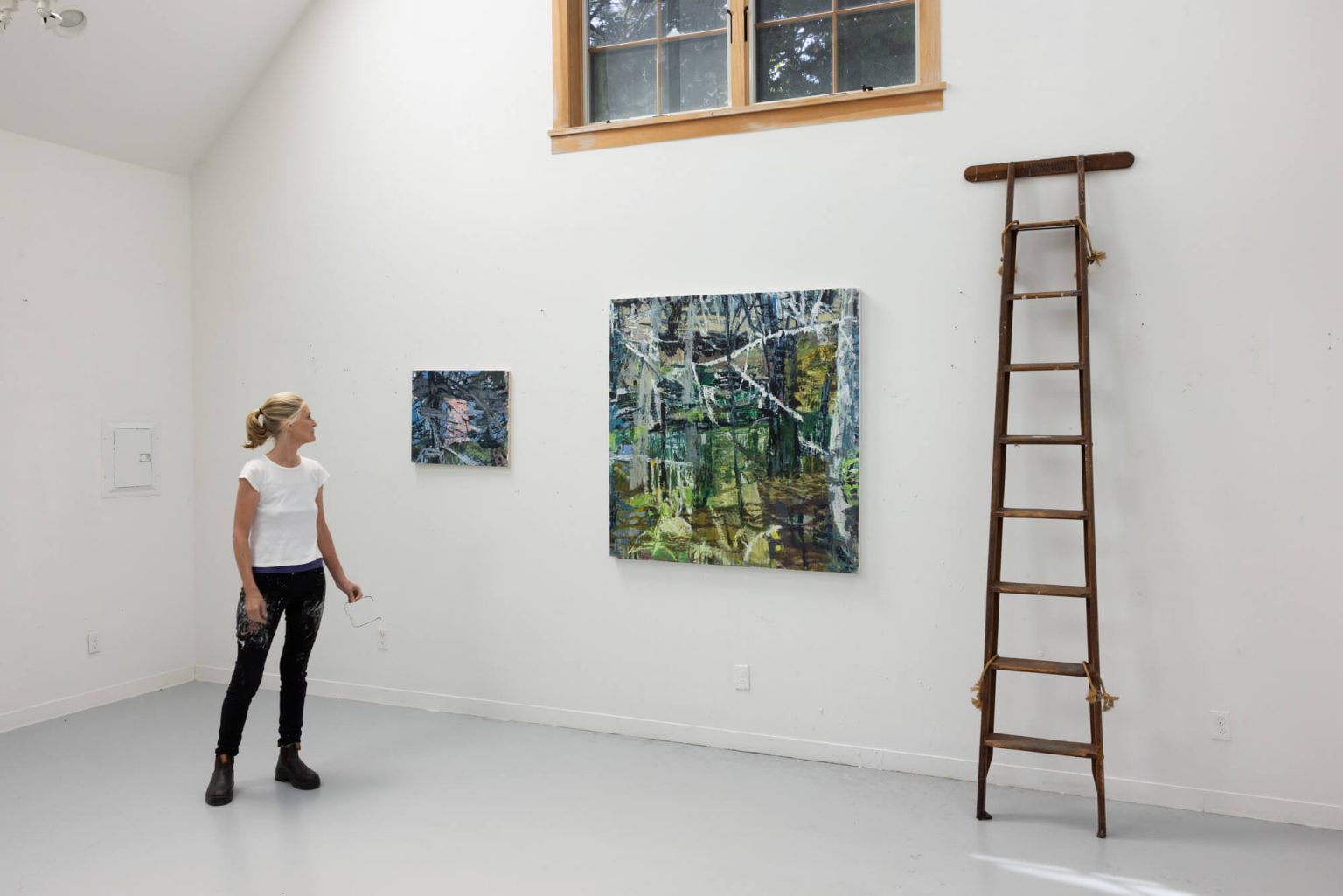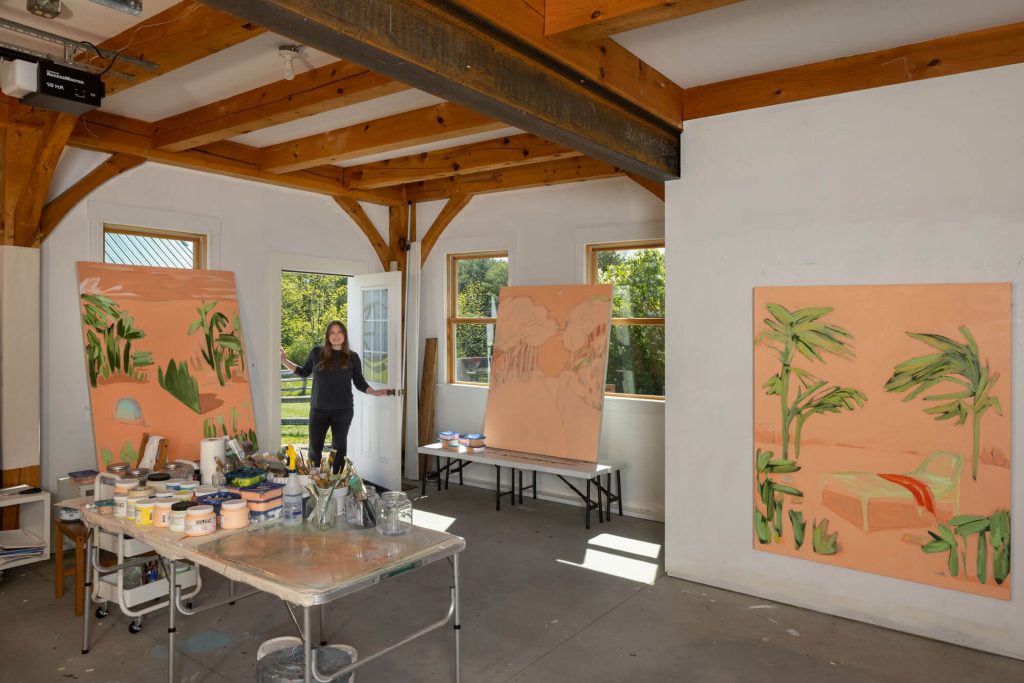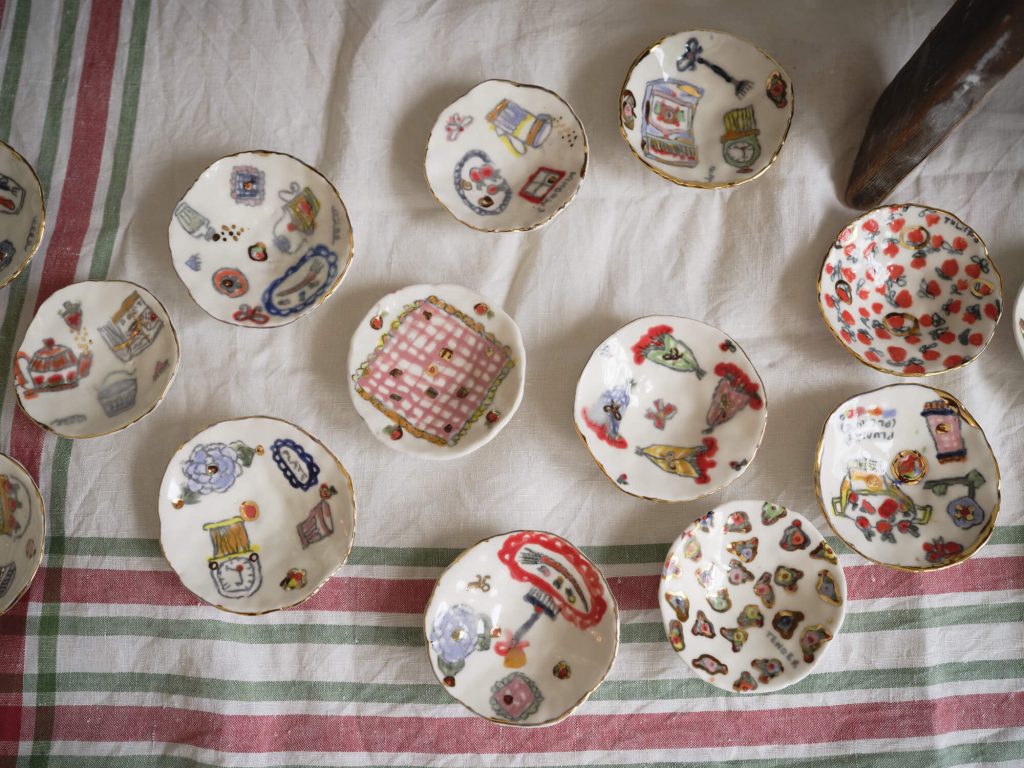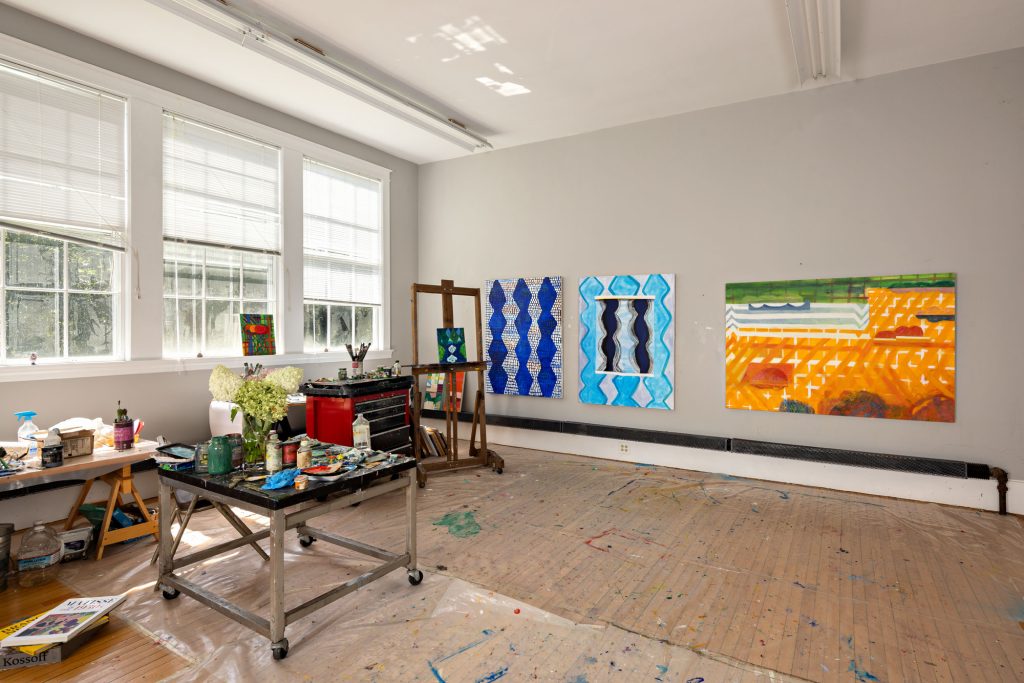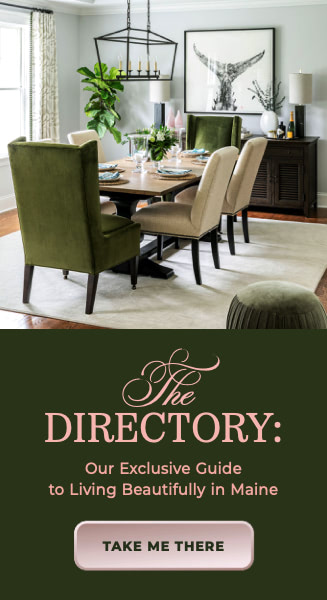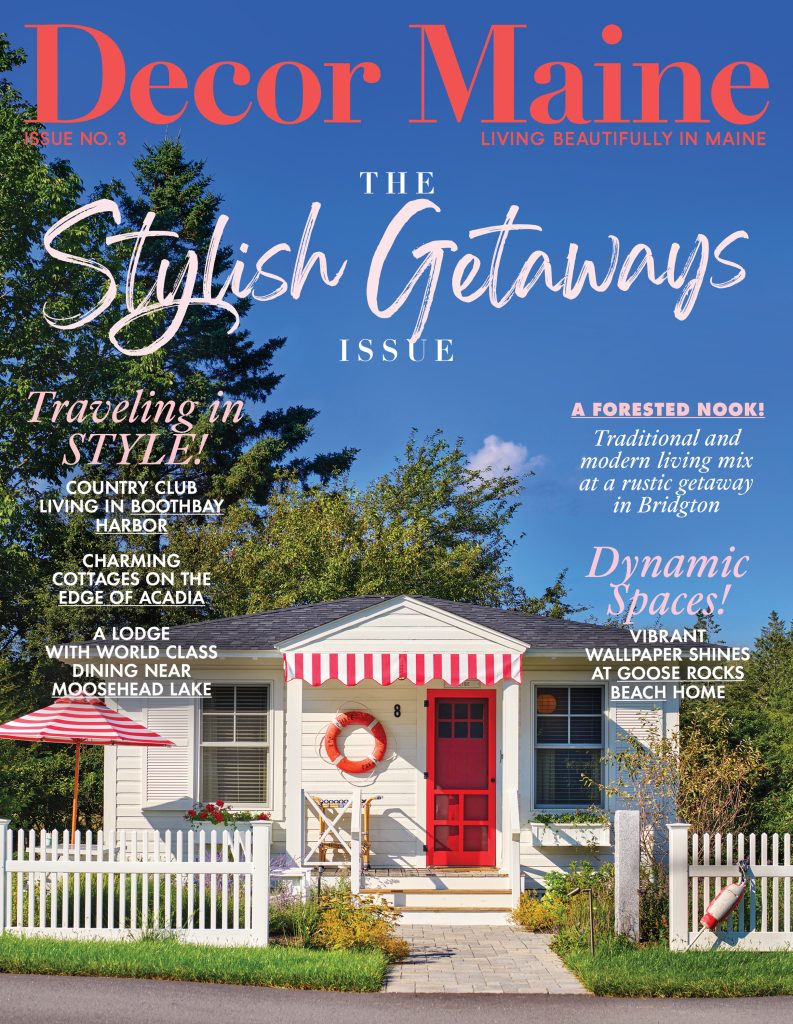An established landscape painter in her native Australia, artist Joanna Logue moved to Maine in 2018 with her husband, Martin Pera, a top research scientist, for his new job at Jackson Laboratory in Bar Harbor. The couple settled in a historic house in Somesville on Mount Desert Island, where the surrounding environment provides continual inspiration for Logue’s expressively painted, color-saturated images. Her views are not the spectacular vistas popularized by artists Thomas Cole and Frederic Church in the mid-nineteenth century. Instead, Logue paints from within the landscape—the dense tangle of the deep woods, reflections on a boggy pond, and the changing colors of the seasons.
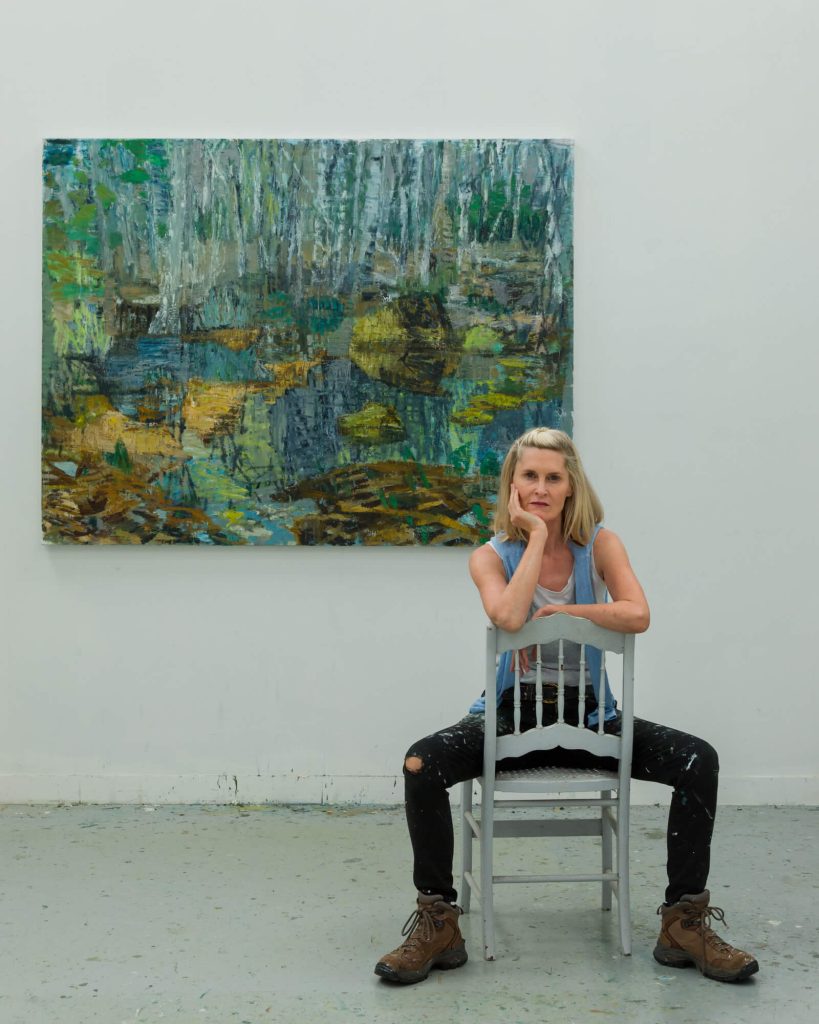
Suzette McAvoy: Joanna, you’ve come to know the Mount Desert landscape intimately in a relatively short time. How do you find your subjects?
Joanna Logue: Living at the foothills of Acadia National Park has meant I can be out hiking most days, and in the colder months, I ski the trails. It’s a fully immersed and absorbing relationship with the landscape. I can take in the minutiae of a pond or marsh or the broader view across a meadow to a stand of birch or a mountain. I’ve always felt a deep connection with landscape and place, and I use this as a point of departure for my painting practice. When I first came to Maine, I built a studio next to our house, and while this was happening, I explored the island, climbing every mountain and walking every trail, sometimes making gouaches and drawings along the way. Although it will take some time to be called “a local,” I feel I know Mount Desert Island like the back of my hand.
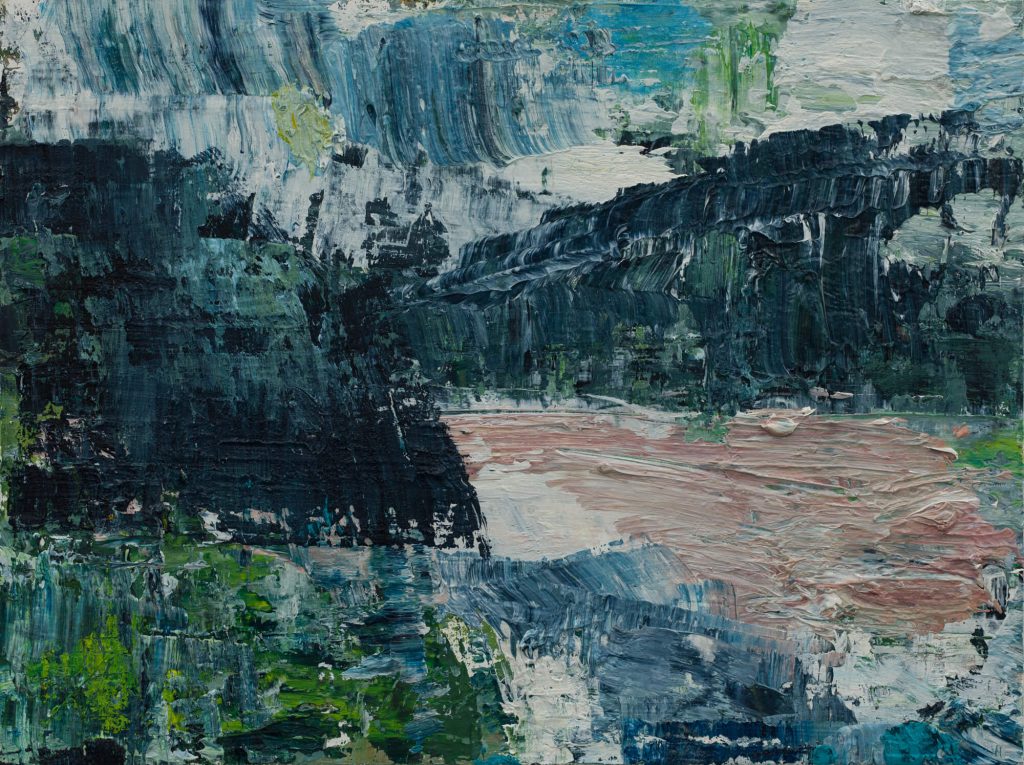
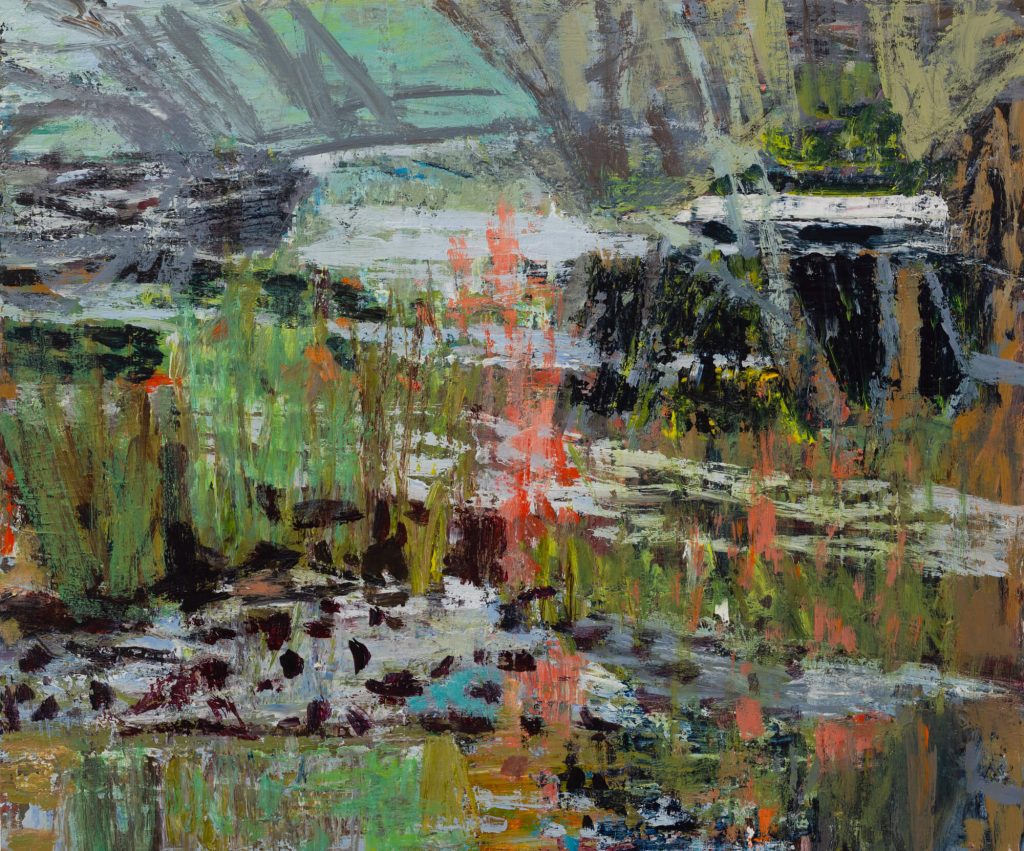
SM: What are some notable differences between the Australian landscape and the landscape in Maine, and how does that translate to your work?
JL: My visual language has changed considerably since moving to Maine. The wooded terrain is particularly complex, resulting in a lively painted surface. Being surrounded by water—not just the ocean but marshes, pools, and glacial ponds—has added another element to my work. And the birch and conifer are different from the eucalyptus I’m used to painting. The color here is much more vibrant, particularly in the fall, unlike the muted, tertiary palette of the Australian bush. I am still struck by how marked the seasons are, unlike in Australia, where seasonal changes happen slowly. Living in Maine is a painter’s paradise.
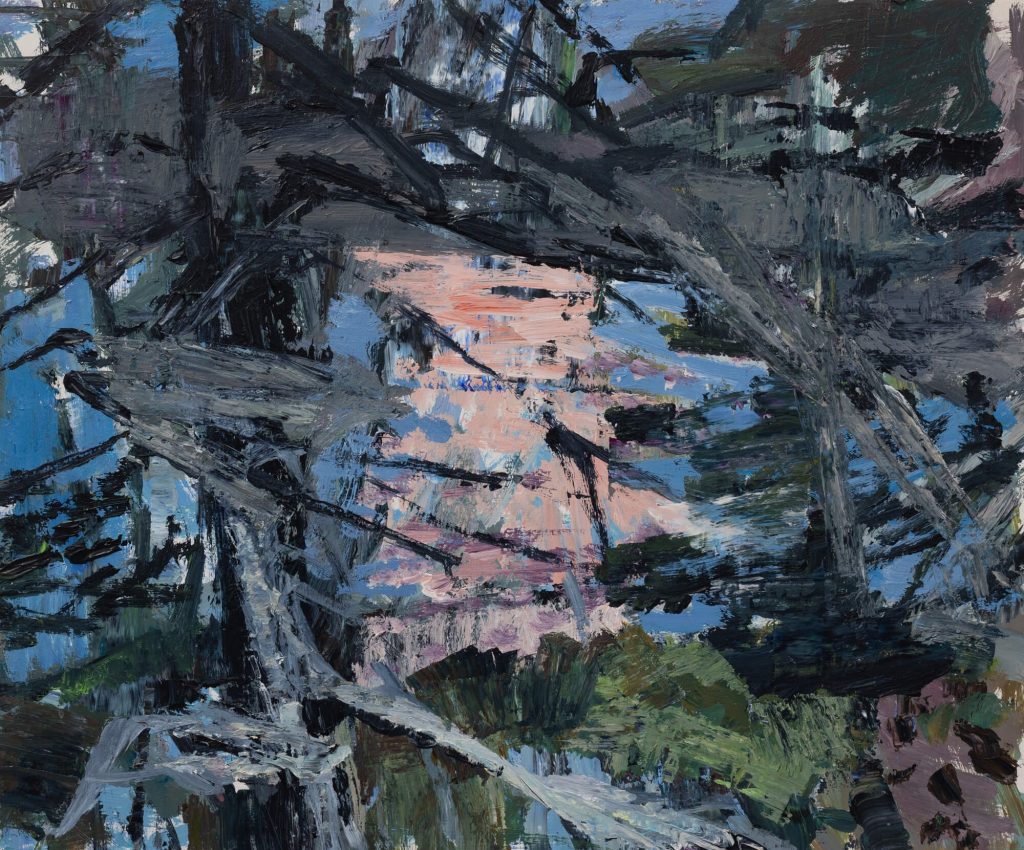
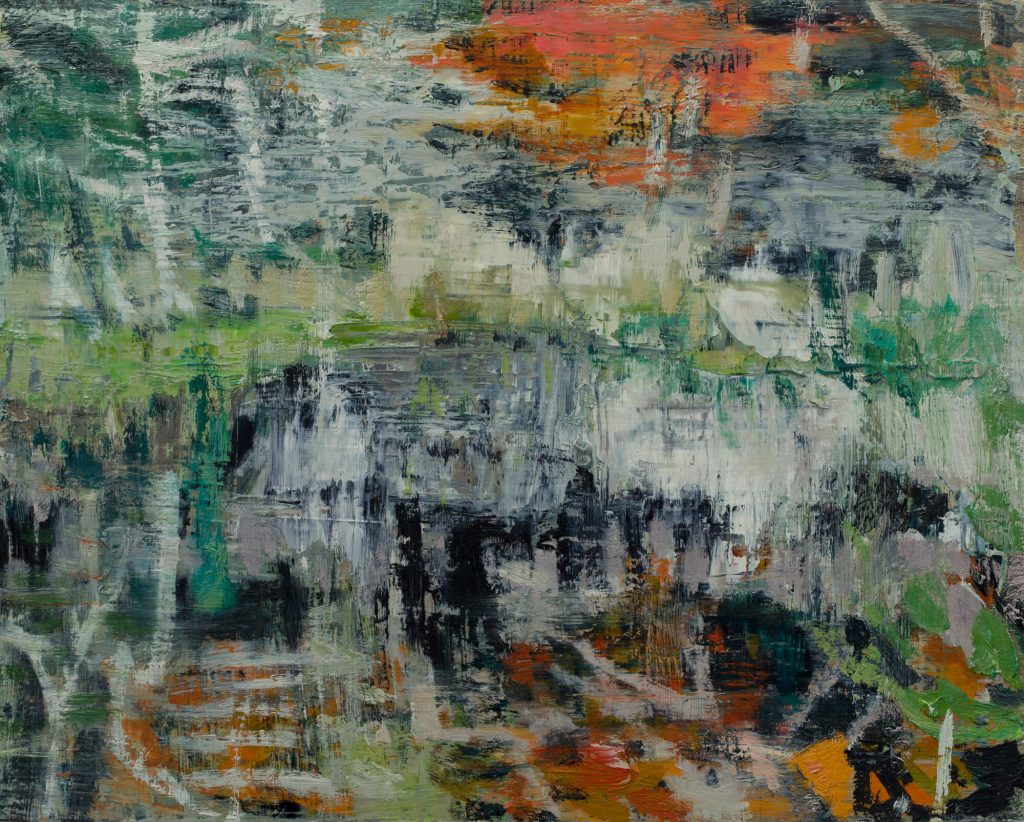
SM: The surfaces of your paintings are really active and tactile. Can you describe a little of your process?
JL: My painting practice happens mainly in the studio using memory and studies I’ve made en plein air. I make large paintings with many layers of thick paint, which I then etch back into with a trowel. I revisit the images many times until the work holds a visceral memory or essence of a remembered place. The paintings form relationships when making a body of work, and a visual language develops. I can then borrow motifs and reference colors to continue building an image. Sometimes, this process is deliberate, and sometimes it happens unconsciously through a kind of osmosis. Although my departure point is inspired by a personal and particular place, my hope is that the work transcends the specific and evokes a universal landscape. This is precisely what the Maine landscape stirs in me. It seems somehow timeless, symbolizing an archetypal wilderness.
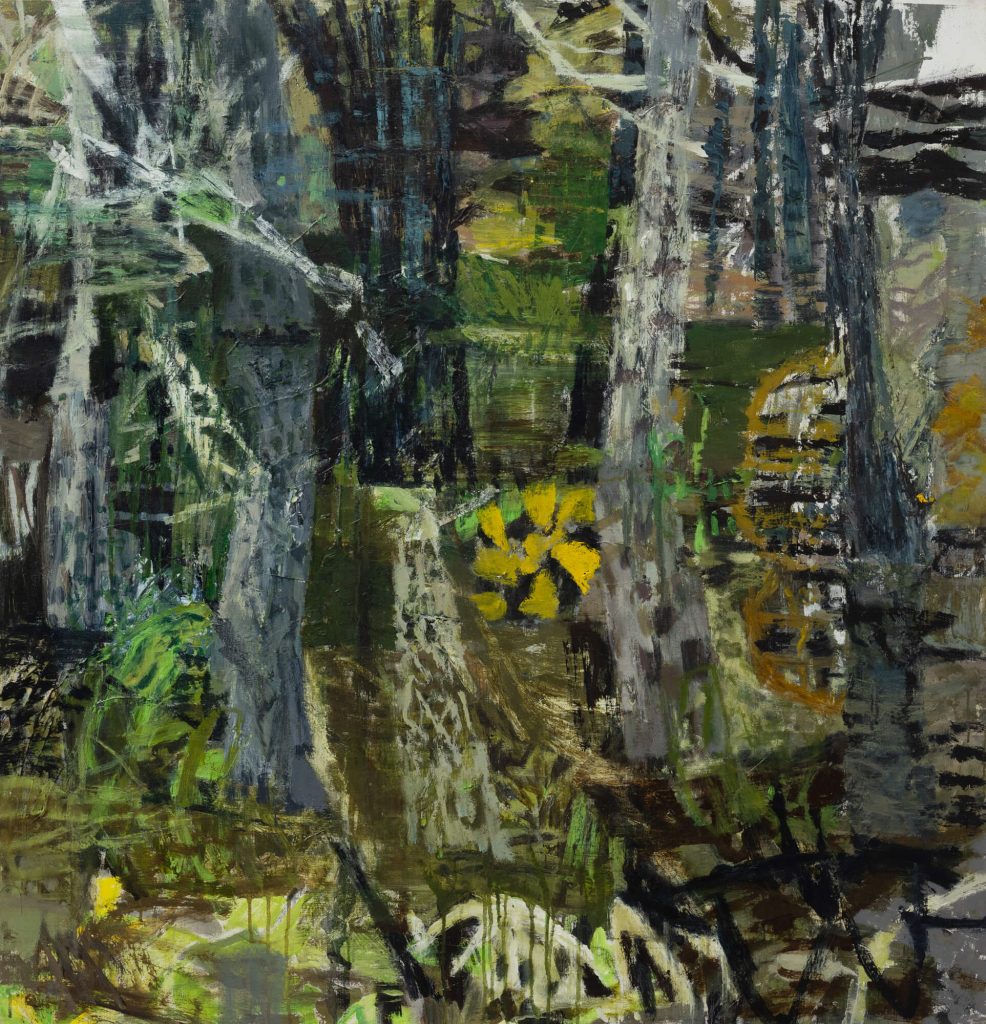
SM: What’s underway in the studio? Any upcoming shows or news you can share?
JL: Presently, I’m making an exhibition for my London gallery, opening in September, and a show for Dowling Walsh Gallery in Rockland, which will open in the fall. Both shows will feature paintings inspired by the Maine landscape. I’m also experimenting with painting on linen pieces patched together, suggestive of roughly sewn quilts. I’ve often thought of my images as reminiscent of tapestries or weavings, and this quality has evolved since moving to Maine. Here the landscape is bold but somewhat intricate, a complicated interlacing of shapes, lines, colors, and tones. The studio offers up surprises if one stays open to experimentation. ▪
